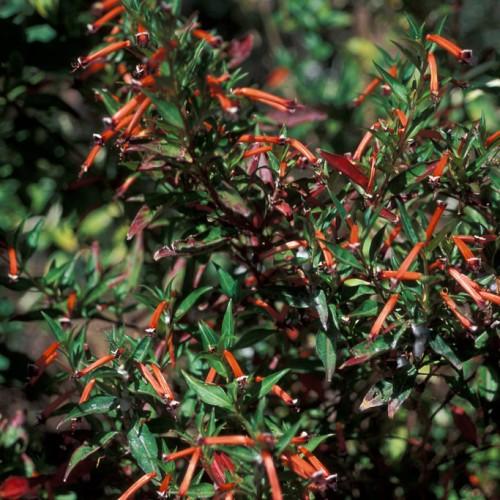
cigar flower
Cuphea ignea
Cycle:
Perennial
Watering:
Average
Hardiness Zone:
10 - 12
Flowers:
Flowers
Sun:
full sun
Leaf:
Yes
Growth Rate:
High
Maintenance:
Low
Drought Tolerant:
Yes
Salt Tolerant:
Yes
Tropical:
Yes
Care Level:
Medium
watering
Watering for a cigar flower should occur twice per week. Water should be done in moderate amounts – approximately 1-2 cups of per watering, around the perimeter of the soil. Make sure to water deeply, so that all parts of the root system are adequately watered. Let the soil dry out between each watering. When the top inch of soil becomes dry, it’s time to water the plant again. As a general rule of thumb, too little water is better than too much water.
sunlight
Cigar flower plants require 6 to 8 hours of direct sunlight each day. During the summer months, they need to be placed in an area that will get full morning sun, and then filtered shade for the remainder of the day. In winter, they can tolerate some cooler temperatures, but should be placed in an area that gets plenty of natural sunlight.
pruning
Cigar Flower should be pruned once a year in late winter or early spring, shortly before new growth begins. For selective pruning, about 1-third of the stems should be removed to promote bushier, healthier growth. Be sure to cut back any dead or weak stems, as well as branches that cross-over or are excessively long. Pruning this plant too often will reduce blooming for the upcoming season.
